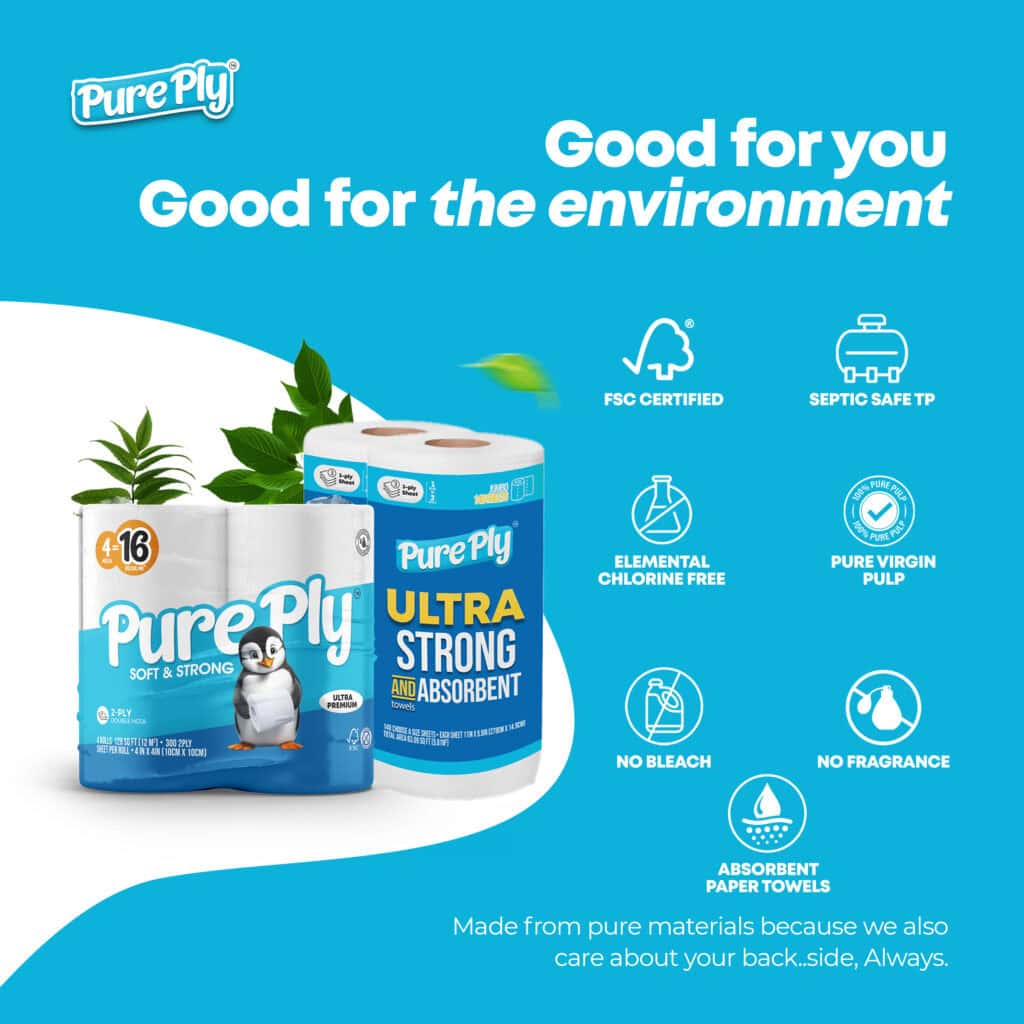TL;DR
Food waste is a BIG problem for restaurants, but it doesn’t have to be! Learn how to cut down on waste, with savvy strategies: from smart inventory management and menu planning to customer tips on reducing food waste.
Plus, learn about PurePly’s eco-friendly paper products—perfect for keeping things clean and green!”
Food waste in restaurants is a significant issue that not only impacts the environment but also affects profitability. According to recent studies, restaurants are responsible for a considerable amount of food waste, making it crucial for the industry to adopt sustainable practices. In this blog post, we will explore effective strategies and practical tips on how restaurants can minimize food waste and contribute to a greener future.
Understanding Food Waste in Restaurants
Before diving into answers and solutions on to how to reduce food waste in restaurants, it’s essential to understand the scope of the problem. Food waste in restaurants occurs at various stages, including during preparation, cooking, serving, and even after meals are finished. Factors such as over-ordering, improper storage, and plate waste contribute significantly to this issue.
How to Deal with Food Waste in Restaurants
Reducing food waste begins with careful planning and efficient management practices:
- Inventory Management: Regularly monitor inventory levels and track consumption patterns to minimize over-ordering.
- Menu Planning: Design menus that utilize seasonal ingredients and consider offering flexible portion sizes to match customer preferences.
- Storage Practices: Properly store perishable items to maintain freshness and extend shelf life. Implement a “first in, first out” (FIFO) approach to minimize spoilage.
Waste Management in the Fast Food Industry
Fast food establishments face unique challenges due to high turnover rates and standardized menu items. However, there are still effective ways to reduce waste:
- Optimize Production: Use forecasting tools to predict demand accurately and adjust production accordingly.
- Portion Control: Offer portion sizes that align with customer expectations to reduce plate waste.
- Donation Programs: Partner with local food banks or shelters to donate excess food that meets safety guidelines.
- Join Local Composting Services: Partnering with a composting service allows restaurants and fast food outlets to continue diverting food scraps from landfills while ensuring proper large-scale composting practices are followed.
How Can Customers Reduce Food Waste?
Customers play a crucial role in minimizing food waste when dining out:
- Order Wisely: Order only what you can eat or take home leftovers.
- Support Sustainable Practices: Choose restaurants that prioritize sustainable sourcing and waste reduction.
- Ask for Smaller Portions: Don’t hesitate to request smaller portions if you have a smaller appetite.
10 Ways to Avoid Wastage of Food
Here are ten actionable tips for restaurants to minimize food waste:
- Conduct regular waste audits to identify areas of improvement.
- Train staff on proper portioning and handling techniques.
- Implement composting programs for food scraps.
- Offer customizable options to reduce food customization waste.
- Use food waste tracking apps to monitor and adjust purchasing habits.
- Educate customers about your efforts to reduce food waste.
- Invest in energy-efficient kitchen appliances to reduce overall waste.
- Collaborate with suppliers to reduce packaging waste.
- Use biodegradable or reusable containers for takeout orders.
- Continuously evaluate and refine waste reduction strategies based on data and feedback.
How to Record Food Waste in Accounting
Tracking food waste in your accounting practices helps to quantify the impact and identify areas for improvement:
- Establish Metrics: Develop key performance indicators (KPIs) related to food waste, such as cost per pound of wasted food.
- Integrate Systems: Utilize software or spreadsheets to record and analyze food waste data alongside financial records. For example, Inventory Management Software’s could be your digital ordering oracle!
- Set Targets: Establish goals for waste reduction and monitor progress regularly to stay on track.
PurePly: Your Eco-Friendly Solution

Congratulations, brave chefs! You’ve discovered that the answer to the topic “how to reduce food waste in restaurants” is a simple one. By wielding the power of smart inventory management, portion control, and creative leftover utilization, you’re well on your way to becoming a Waste Warrior. Remember, every small step counts in the fight against food waste and other kinds of waste like excessive toilet paper use that leads to shortages.
By adopting these strategies and choosing eco-friendly products like PurePly, restaurants can significantly reduce their environmental footprint while maintaining operational efficiency. Whether tackling spills, stains, or residue, our eco-friendly products, like compostable paper towels and toilet paper, are perfect for restaurants on a sustainability quest.
At PurePly, we understand the importance of sustainability in every aspect of business operations. Our products, including 100% pure virgin wood pulp paper towels and toilet papers, are FSC certified, ensuring they come from responsibly managed forests. They are also chlorine and bleach-free, suitable for all skin types with no irritation.
You should explore our innovative away from home solutions that fits into any dispenser like a glove. Come, let’s create a future where delicious food and environmental responsibility go hand-in-hand.